View Programs and Tools that may be Utilized to Generate Carbon Credits
What is a Carbon Credit?
In a wetland, more carbon dioxide is removed from the atmosphere and incorporated into vegetation and soil than in either a forest or an upland prairie. A study by The Conservation Fund found that wetlands store 81 to 216 metric tons of carbon per acre, depending on their type and location. This makes wetlands a resource for carbon sequestration.
As knowledge about climate change increases, the concept of carbon sequestration, or the storage of carbon in soils and vegetation, is gaining currency. Today, an industry is emerging for assessing and trading carbon credits in both regulatory (compliance) markets and voluntary markets. One carbon credit is equivalent to the removal of one ton of carbon dioxide from the atmosphere.
In order to determine how much carbon a land type (i.e. wetlands, bottomland forests, grassland) captures, quantification methodologies approved under international standards have been developed and tailored to the unique properties of each ecosystem type. Differences in approved methodologies have led to different types of carbon credits in the various markets.
| How can you visualize a ton of carbon dioxide (or one carbon credit)? One metric ton would fill a balloon 10 meters (32.8 feet) in diameter. |
Regulatory Market
In the regulatory market, projects operating under the United Nations Framework Convention on Climate Change’s approved credit accounting mechanisms generate Certified Emissions Reductions (CERs) carbon credits.
Currently, in California, where the state has established a state climate policy, companies can purchase CERs and exchange credits in the regulatory market. Regulatory markets tend to have a higher price per carbon unit and a higher demand by buyers, but require longer commitment from carbon credit sellers (100+ years) for management and more on-going costs in regulatory review and inventory.
Voluntary Market
In voluntary markets, projects may work under several independent international credit accounting standards and generate Verified Emission Reductions (VERs). These methods attempt to assure that one carbon credit is truly equal to the removal of one ton of carbon dioxide from the atmosphere.
For voluntary markets, the requirements vary based on the program and the adopted standards. Voluntary markets tend to have shorter management requirements and more project flexibility, but VER’s tend to sell for a lower price and the price per unit can be highly variable. Companies purchasing from voluntary markets are not obligated by law to purchase credits. They may choose to purchase credits for a variety of reasons, including fulfilling internal corporate climate objectives, enhancing brand image, preparing for upcoming environmental regulation, or presenting as an environmental leader.
Carbon Credit Registry
The American Carbon Registry, the Verified Carbon Standard, Chicago Climate Exchange, and the Climate Action Reserve are example of voluntary markets. The California Environmental Protection Agency Air Resources Board Cap and Trade Program and the Regional Greenhouse Gas Initiative are examples of agencies involved in regulatory markets. For carbon credits to be sold in these markets they must be verified to the market standard for carbon quantification and then registered so they can be tracked on the market.
Carbon Credit Developers
In the private market, companies have emerged as carbon sequestration project developers. These companies work with landowners to develop carbon reduction projects, assess the amount of carbon that can be offset, and market the offset as credits on the carbon exchange market. Finite Carbon and Tierra Resources are examples. Some non-profit organizations, such as Ducks Unlimited with its Carbon Sequestration Program, are assisting landowners in participating in voluntary carbon markets.
To get started, landowners contact a project developer, program, or consultant which works with certified Green-e, ICROA, or approved partners to assure actual carbon reduction can occur. Properties of several thousand acres are ideal, but for smaller parcels, a project developer may pool land holdings into a carbon aggregator partnership.
Learn About Carbon Markets from the Experts
- USA Office of Environmental Markets website
- USDA Forest Service Carbon Sequestration website
- Texas A&M Forest Service Ecological Services website
- Ducks Unlimited Carbon Sequestration Program
- Ecosystem Marketplace’s Carbon Market Watch

Programs and Tools that may be Utilized to Generate Carbon Credits
Click on a program below to learn more
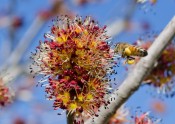 Agricultural Conservation Easement Program’s Wetland Reserve Easements - CEP WRE, created in the 2014 Farm Bill is the newest version of the previously authorized Wetlands Reserve Program. Under ACEP WRE, the Natural Resources Conservation Service (NRCS) provides financial and technical support to private landowners and Indian tribes to protect, enhance, or restore wetlands. A wetland reserve easement is used to accomplish this protection. Read More →
Agricultural Conservation Easement Program’s Wetland Reserve Easements - CEP WRE, created in the 2014 Farm Bill is the newest version of the previously authorized Wetlands Reserve Program. Under ACEP WRE, the Natural Resources Conservation Service (NRCS) provides financial and technical support to private landowners and Indian tribes to protect, enhance, or restore wetlands. A wetland reserve easement is used to accomplish this protection. Read More →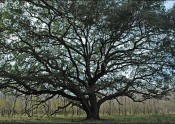 Carbon Storage and Credits: Landowner/Developer and Aggregators - Various Private and Nonprofit Entities Choosing a Marketplace for Carbon Trade No one single program deals with carbon offset credits. One branch of the carbon market is the compliance market where carbon emitters are required to offset their emissions by local, state, federal, or international policy. The other branch of the carbon market is the voluntary market where individuals and businesses volunteer to purchase carbon offsets in order to reduce their greenhouse gas emission impacts. There are several marketplaces (often called exchanges) for buyers and sellers of carbon... Read More →
Carbon Storage and Credits: Landowner/Developer and Aggregators - Various Private and Nonprofit Entities Choosing a Marketplace for Carbon Trade No one single program deals with carbon offset credits. One branch of the carbon market is the compliance market where carbon emitters are required to offset their emissions by local, state, federal, or international policy. The other branch of the carbon market is the voluntary market where individuals and businesses volunteer to purchase carbon offsets in order to reduce their greenhouse gas emission impacts. There are several marketplaces (often called exchanges) for buyers and sellers of carbon... Read More →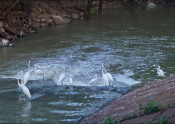 Clean Water State Revolving Fund Loan Program: Texas Loan Program - Texas Water Development Board (TWDB) The Clean Water State Revolving Fund (CWSRF), which is authorized by the Clean Water Act and funded by the US Environmental Protection Agency (EPA), provides below-market interest rate loans to applicants wishing to implement projects for estuary management, nonpoint source pollution management, or wastewater management. Applicants can be cities, counties, districts, river authorities, and private owners. Funding can be used for planning, design, and construction of projects. CWSRF can be used for wetland projects. According to the EPA, wetland projects are usually categorized... Read More →
Clean Water State Revolving Fund Loan Program: Texas Loan Program - Texas Water Development Board (TWDB) The Clean Water State Revolving Fund (CWSRF), which is authorized by the Clean Water Act and funded by the US Environmental Protection Agency (EPA), provides below-market interest rate loans to applicants wishing to implement projects for estuary management, nonpoint source pollution management, or wastewater management. Applicants can be cities, counties, districts, river authorities, and private owners. Funding can be used for planning, design, and construction of projects. CWSRF can be used for wetland projects. According to the EPA, wetland projects are usually categorized... Read More →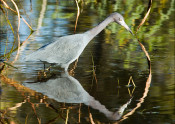 Conservation Stewardship Program (CStP) - USDA Natural Resources Conservation Service (NRCS) The Conservation Stewardship Program (CStP) is a voluntary conservation program administered by US Department of Agriculture (USDA) Natural Resources Conservation Service (NRCS). The program’s mission is to assist agricultural producers in maintaining and enhancing their existing conservation efforts, especially in relation to Texas’ program priorities: water quantity, soil erosion, and plant health and condition. The theme for CStP is “payment for performance“. Eligible lands include privately owned and Tribal agricultural lands, croplands, pasturelands, rangelands, grasslands, and nonindustrial private forest land. This includes... Read More →
Conservation Stewardship Program (CStP) - USDA Natural Resources Conservation Service (NRCS) The Conservation Stewardship Program (CStP) is a voluntary conservation program administered by US Department of Agriculture (USDA) Natural Resources Conservation Service (NRCS). The program’s mission is to assist agricultural producers in maintaining and enhancing their existing conservation efforts, especially in relation to Texas’ program priorities: water quantity, soil erosion, and plant health and condition. The theme for CStP is “payment for performance“. Eligible lands include privately owned and Tribal agricultural lands, croplands, pasturelands, rangelands, grasslands, and nonindustrial private forest land. This includes... Read More →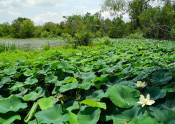 Environmental Quality Incentives Program (EQIP) - USDA Natural Resources Conservation Service (NRCS) EQIP About EQIP The Environmental Quality Incentives Program (EQIP) is a voluntary conservation program administered by the Natural Resources Conservation Service (NRCS). The program’s mission is to promote the compatibility of agricultural production, forest management, and environmental conservation. Financial and technical assistance are provided to enrolled landowners to implement conservation practices (structural and management) on eligible lands. Eligible lands include cropland, non-industrial private forestland, pastureland, ranchland, and other types of farm land. Applicants for an EQIP contract must control or own the... Read More →
Environmental Quality Incentives Program (EQIP) - USDA Natural Resources Conservation Service (NRCS) EQIP About EQIP The Environmental Quality Incentives Program (EQIP) is a voluntary conservation program administered by the Natural Resources Conservation Service (NRCS). The program’s mission is to promote the compatibility of agricultural production, forest management, and environmental conservation. Financial and technical assistance are provided to enrolled landowners to implement conservation practices (structural and management) on eligible lands. Eligible lands include cropland, non-industrial private forestland, pastureland, ranchland, and other types of farm land. Applicants for an EQIP contract must control or own the... Read More →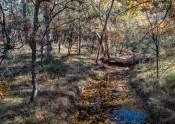 Forest Legacy Program (FLP) - Texas A&M Forest Service (TFS) About the Forest Legacy Program The Forest Legacy Program (FLP), administered by the Texas A&M Forest Service, the State of Texas, and USDA Forest Service, is a voluntary program which purchases conservation easements on forestland voluntarily offered for purchase by private landowners. Protecting priority forests from conversion to non-forested land use is the program’s goal. Forested wetland conservation is an aspect of this program. Eligible land must be in the Forest Legacy target area. Landowners must have clear title, be willing to permanently... Read More →
Forest Legacy Program (FLP) - Texas A&M Forest Service (TFS) About the Forest Legacy Program The Forest Legacy Program (FLP), administered by the Texas A&M Forest Service, the State of Texas, and USDA Forest Service, is a voluntary program which purchases conservation easements on forestland voluntarily offered for purchase by private landowners. Protecting priority forests from conversion to non-forested land use is the program’s goal. Forested wetland conservation is an aspect of this program. Eligible land must be in the Forest Legacy target area. Landowners must have clear title, be willing to permanently... Read More →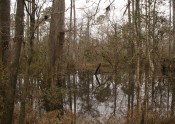 Forest Stewardship Program (FSP) - Texas A&M Forest Service (TFS) About the Forest Stewardship Program The Forest Stewardship Program, administered by Texas A&M Forest Service and their partner, USDA Forest Service, provides technical assistance to landowners who wish to sustainably manage their forested property. There is no cost to the landowner for assistance or forest plan preparation. More than 8,000 FSP plans have been created since FSP began in 1991, enrolling more than 1.4 million acres of Texas forests. Foresters help landowners tailor a management plan to their goals and unique forestland. This... Read More →
Forest Stewardship Program (FSP) - Texas A&M Forest Service (TFS) About the Forest Stewardship Program The Forest Stewardship Program, administered by Texas A&M Forest Service and their partner, USDA Forest Service, provides technical assistance to landowners who wish to sustainably manage their forested property. There is no cost to the landowner for assistance or forest plan preparation. More than 8,000 FSP plans have been created since FSP began in 1991, enrolling more than 1.4 million acres of Texas forests. Foresters help landowners tailor a management plan to their goals and unique forestland. This... Read More → Landowner Incentive Program - Texas Parks and Wildlife Department Landowner Incentive Program (LIP) The Landowner Incentive Program (LIP) is a voluntary conservation program administrated by Texas Parks and Wildlife Department and funded through the US Fish and Wildlife Service (USFWS) Partners for Fish and Wildlife Program, National Fish and Wildlife Foundation, and others. LIP provides financial assistance to landowners who wish to implement conservation practices, particularly for activities benefiting rare or at-risk species and valuable riparian areas and watersheds. LIP is a reimbursement program. Landowners will receive payment upon completion of the... Read More →
Landowner Incentive Program - Texas Parks and Wildlife Department Landowner Incentive Program (LIP) The Landowner Incentive Program (LIP) is a voluntary conservation program administrated by Texas Parks and Wildlife Department and funded through the US Fish and Wildlife Service (USFWS) Partners for Fish and Wildlife Program, National Fish and Wildlife Foundation, and others. LIP provides financial assistance to landowners who wish to implement conservation practices, particularly for activities benefiting rare or at-risk species and valuable riparian areas and watersheds. LIP is a reimbursement program. Landowners will receive payment upon completion of the... Read More → Partners for Fish and Wildlife Program - US Fish and Wildlife Service (USFWS) About the Partners Program The Partners for Fish and Wildlife Program’s (Partners Program) mission is to achieve voluntary habitat restoration on private lands for the benefit of Federal Trust Species. A Partners Program partnership is a voluntary agreement between a private landowner (any non-State or non-Federally owned land) and the US Fish and Wildlife Service (USFWS) and its partners for financial and technical assistance toward achievement of an agreed upon restoration project. A cooperative agreement with a minimum 10 year term is... Read More →
Partners for Fish and Wildlife Program - US Fish and Wildlife Service (USFWS) About the Partners Program The Partners for Fish and Wildlife Program’s (Partners Program) mission is to achieve voluntary habitat restoration on private lands for the benefit of Federal Trust Species. A Partners Program partnership is a voluntary agreement between a private landowner (any non-State or non-Federally owned land) and the US Fish and Wildlife Service (USFWS) and its partners for financial and technical assistance toward achievement of an agreed upon restoration project. A cooperative agreement with a minimum 10 year term is... Read More → Purchase of Conservation Easements - Various Land Trust and Government Agencies Conservation easements often involve the donation of development rights of land. This donation is often used to obtain a tax deduction. However, in some cases, the development rights of land can be purchased by a willing land trust or government program for a one-time cash payment. Purchased conservation easements are also known as the purchase of development rights (PDRs). If there is funding available for the PDRs, the purchase price is often less than the value of the full value of the... Read More →
Purchase of Conservation Easements - Various Land Trust and Government Agencies Conservation easements often involve the donation of development rights of land. This donation is often used to obtain a tax deduction. However, in some cases, the development rights of land can be purchased by a willing land trust or government program for a one-time cash payment. Purchased conservation easements are also known as the purchase of development rights (PDRs). If there is funding available for the PDRs, the purchase price is often less than the value of the full value of the... Read More →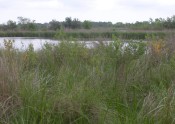 Texas Coastal Program - US Fish and Wildlife Service (USFWS) The Coastal Program assists with funding for coastal habitat projects. The Coastal Program partners with Federal programs, State agencies, Tribal and local governments, non-profit organizations, businesses, industry, land trusts, and private landowners who wish to fulfill habitat conservation goals on their land. The Coastal Program is a reimbursement program. The landowner is not reimbursed for the cost-share portion of the project cost until after the project is completed. Cooperative partnerships are emphasized by the Coastal Program. Coastal Program partners, known as cooperators,... Read More →
Texas Coastal Program - US Fish and Wildlife Service (USFWS) The Coastal Program assists with funding for coastal habitat projects. The Coastal Program partners with Federal programs, State agencies, Tribal and local governments, non-profit organizations, businesses, industry, land trusts, and private landowners who wish to fulfill habitat conservation goals on their land. The Coastal Program is a reimbursement program. The landowner is not reimbursed for the cost-share portion of the project cost until after the project is completed. Cooperative partnerships are emphasized by the Coastal Program. Coastal Program partners, known as cooperators,... Read More →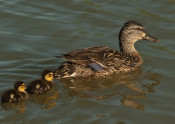 Texas Prairie Wetlands Project - Ducks Unlimited The Texas Prairie Wetlands Project (TPWP) is a partnership between Ducks Unlimited, Texas Parks and Wildlife Department, USDA Natural Resources Conservation Service, and U.S. Fish and Wildlife Service. The TPWP mission is to create overwintering habitat for waterfowl and improve health and survival rates before migration in the spring. TPWP works with private landowners in 28 counties on the Texas Gulf Coast to restore and enhance existing wetlands and to create new wetlands. TPWP provides technical assistance for surveying, engineering, and designing a wetland project and... Read More →
Texas Prairie Wetlands Project - Ducks Unlimited The Texas Prairie Wetlands Project (TPWP) is a partnership between Ducks Unlimited, Texas Parks and Wildlife Department, USDA Natural Resources Conservation Service, and U.S. Fish and Wildlife Service. The TPWP mission is to create overwintering habitat for waterfowl and improve health and survival rates before migration in the spring. TPWP works with private landowners in 28 counties on the Texas Gulf Coast to restore and enhance existing wetlands and to create new wetlands. TPWP provides technical assistance for surveying, engineering, and designing a wetland project and... Read More →
